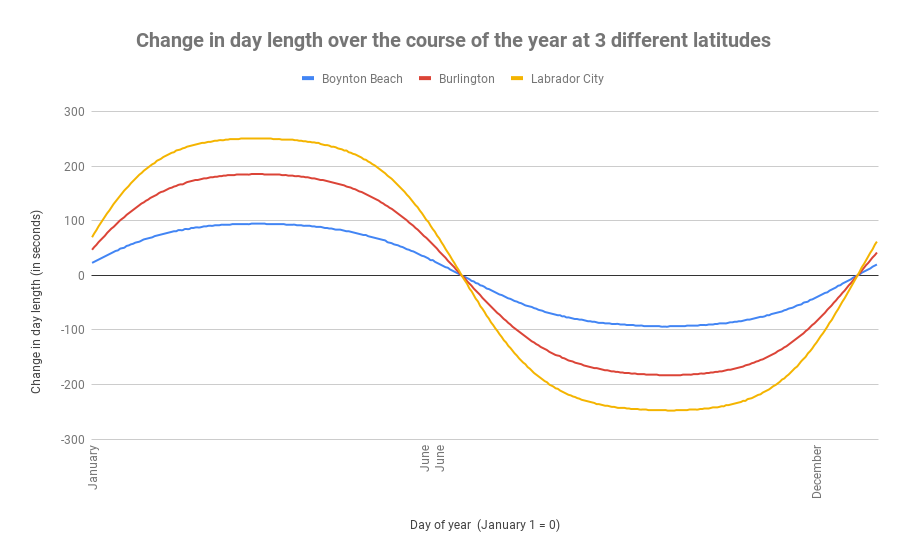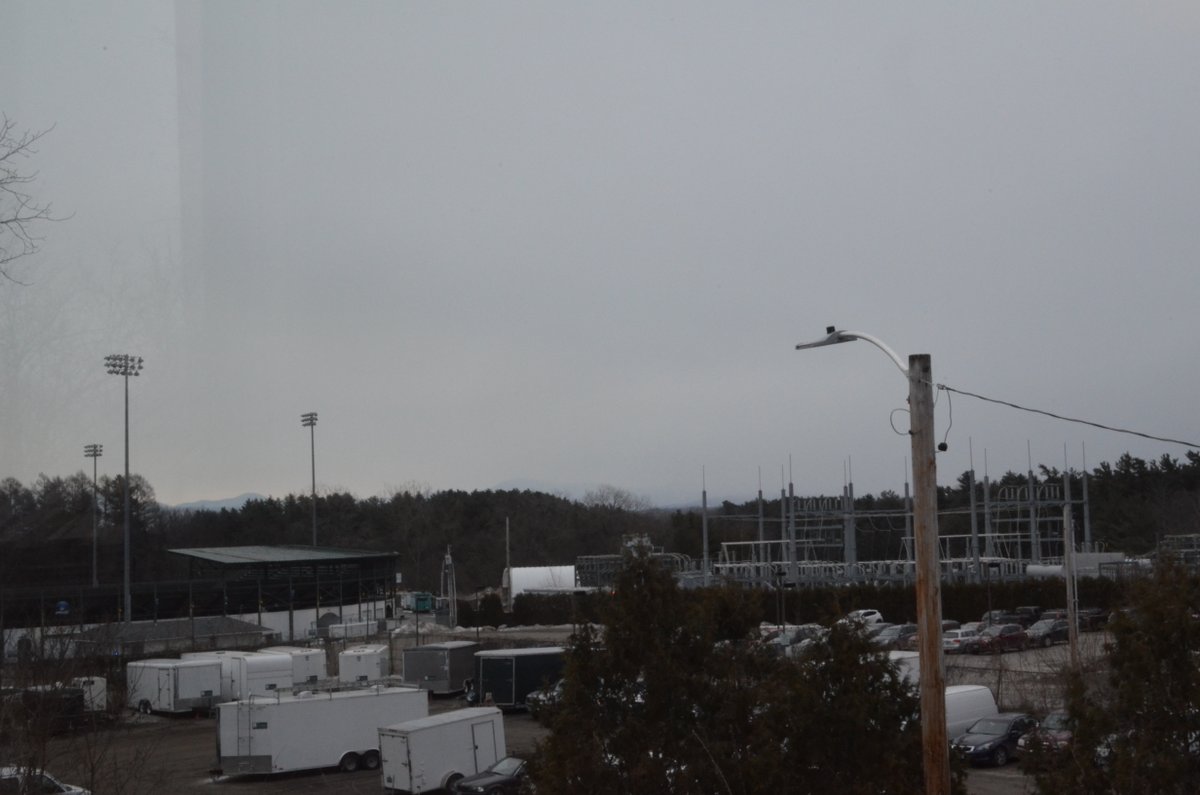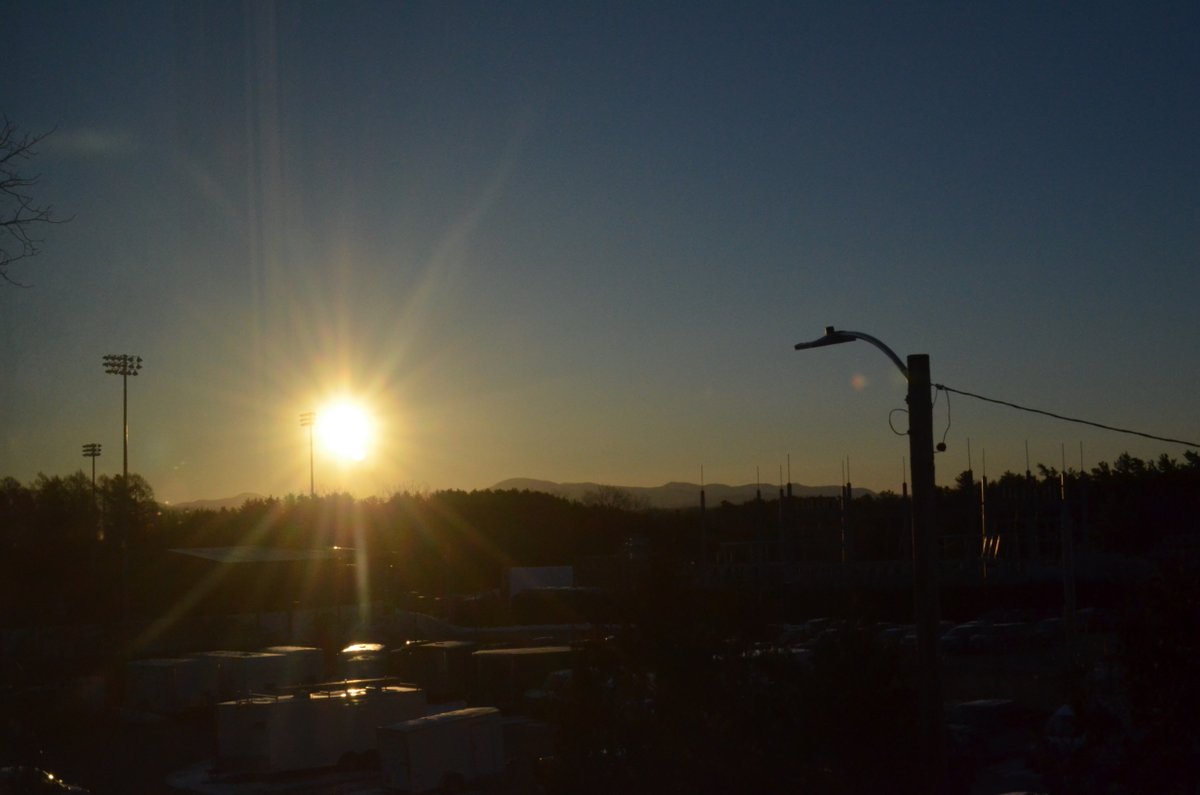The equinox
The Equinox (a in the figure below) is the midpoint between Winter (d) and Summer (b) solstices, and marks the point at which the day length is change most rapidly. If I set a time lapse up in December, right around the Winter Solstice, I wouldn’t observe much difference in sunrise time from day to day. But as the days go by, the rate at which the day length increases speeds up, peaking at the Equinox. In the image below, you can see that the farther away you get from the equator, the greater the change in day length each day:
- 251 seconds more daylight per day in Labrador City (52.9390° N)
- 186 seconds more in Burlington, VT (44.4759° N)
- 95 seconds more in Boynton Beach, FL, where my grandma lives (26.5318° N)
This isn’t surprising since the day length swings from 8hr53min in winter to 15hr33min in Burlington compared to Labrador City’s swing of 7hr40min in winter to 16hr55min in summer.

Measuring day length
During the month of March, we add about an hour and a half more sunlight! And while I know it’s quite easy to look at an online resource to see exactly how much longer the days are, I thought I’d use the time lapse to figure out just how much longer the days are actually getting. So last week I set up a time lapse to photograph the visible sunrise (when the sun first crests over the Green Mountains) from the view out my bedroom window. During the week I felt like I could actually perceive the increase in day length, a total of about a 22 minutes. Day to day there’s only a subtle shift (see images below). Since we’re adding about 3 minutes of light a day around the Equinox, that means just 90 seconds earlier for sunrise and 90 seconds later for sunset. Not much, but it adds up quickly and the change is certainly visible in the images from last week.
All photos taken at 7:11am, March 19-26, 2019
Sources









